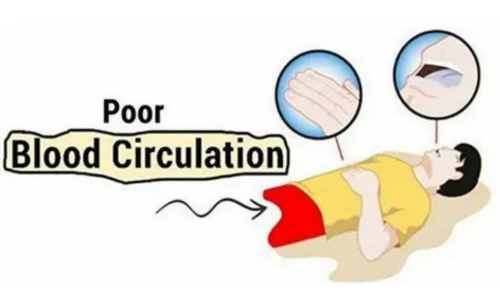
Signs of Poor Circulation You Shouldn’t Ignore (And How to Fix It)
Poor circulation is more than just an inconvenience—it could indicate serious health issues like clogged arteries, which can be life-threatening. That’s why it’s crucial to recognize the signs early and take action.
In most cases, poor circulation signals an underlying health problem. It may point to conditions like low blood pressure, heart disease, or diabetes.
Common Causes of Poor Circulation
Several factors can lead to poor blood flow:
- Smoking: A major contributor to arterial damage.
- Sitting too much: Lack of movement slows down blood flow (check out simple exercises to boost circulation below).
- Junk food: High-fat, high-sugar diets negatively impact your arteries.
- Obesity: Excess weight puts extra pressure on your circulatory system.
Why Healthy Circulation Matters
Blood circulation is essential for delivering nutrients and oxygen to every organ in your body. Without it, vital systems like your brain and heart can suffer damage.
Think of your body as a busy city. If the blood flow is like traffic, a blockage is like a traffic jam—it slows everything down and disrupts productivity. Just like a city needs smooth traffic flow to thrive, your body needs healthy circulation to function.
Could It Be Peripheral Artery Disease (PAD)?
Chronic tiredness, leg pain, or cramps may be more than everyday discomfort—they could be signs of peripheral artery disease (PAD).
PAD happens when plaque builds up in your arteries (atherosclerosis), narrowing them and restricting blood flow, particularly to your legs. Unfortunately, PAD symptoms often mimic other health problems, making it easy for doctors to overlook.
Common PAD Symptoms
- Leg pain or cramps
- Numbness in your legs
- Slow-healing wounds
- Hair loss on your legs
- Shiny skin on your legs
Pro tip: Not everyone experiences noticeable symptoms, so prevention is key!
How to Improve Circulation Naturally
Take charge of your health with these simple lifestyle changes:
- Get Moving: Regular physical activity keeps blood flowing. Try walking, cycling, or yoga.
- Eat a Plant-Based Diet: Include circulation-boosting foods like ginger, garlic, and vitamin E-rich nuts (almonds, Brazil nuts, sunflower seeds).
- Quit Smoking and Alcohol: Both habits are major culprits in poor circulation.
Top Nutrients for Better Circulation
Boost your diet with these nutrients:
- Vitamin E: Found in nuts and seeds.
- Antioxidants: Vitamins C, D, and beta-carotene from fresh fruits and vegetables.
- Selenium: Found in Brazil nuts and seafood.
Visit your local farmer’s market for organic, nutrient-rich produce—it’s a great way to support your health and the environment.
Share and Spread the Word
If you found this article helpful, please share it with your friends or post it on Pinterest. Spreading awareness can help others recognize and address circulation issues before they become serious.
Have any thoughts or tips on improving circulation? Let us know in the comments or share your story on social media!
Leave a Reply